#vishaka
Text
VEDIC ASTROLOGY NOTES ♡
(Can apply to any planet placement)
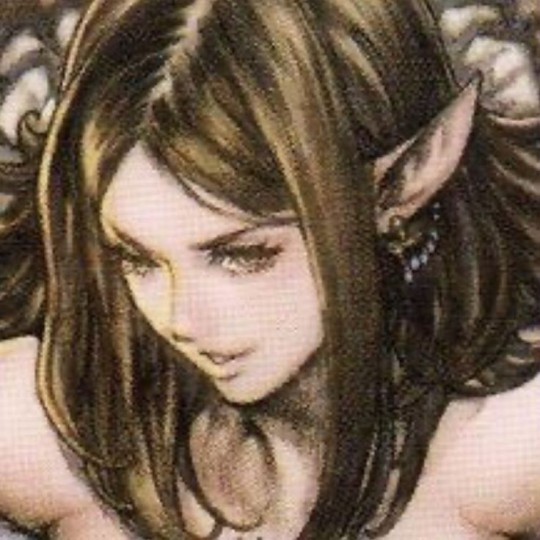
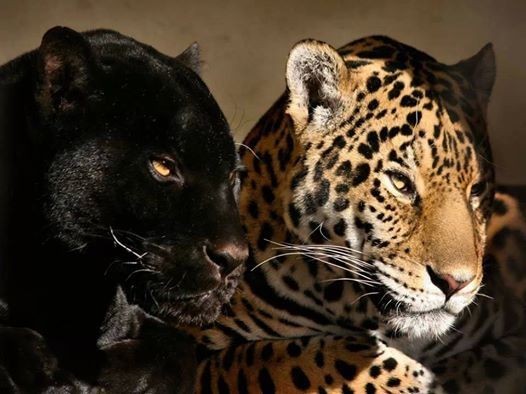

⚡️Ashwini women always stand out to me with their creativity especially in acting , they rly know to embody the character they're playing to the fullest even irl it may be easier for them to shift thro different identities or alter-egos just for funsies
⚡️There's smtg about purva phalguni women , they're gorgeous but for some reason I noticed they get hate esp from other women like they're called fake or pick-mes or they make up stories hmm
⚡️Purva ashadha women are so inspiring like they're always the ones to be teaching or preaching or saying smtg inspiring/motivational. They're beauties with soul and a mind of their own ! If u know a purva ashadha better take notes 📝
⚡️Magha women love wearing black and something about their looks or style is unconventional/gothy, it suits them
⚡️Uttara-phalguni women are so headstrong bruh and they have this leadership aura about them, they're gonna do what THEY think is right. Like other sun-ruled nakshatras they easily get attention
⚡️Mrigashira women love the push & pull , cat &mouse game, they either attract this dynamic or they create it themselves. There's also smth about Mrigashira and obsession 👀
⚡️Jyestha women embody the wild feminine archetype imo, when evolved theyre truly empowered and have this idgaf energy. people may be threatened by their power or skills. Their voice or the way the speak is commanding and naturally charismatic
⚡️Swati/ardra and their eyes 👁👁 most captivating eyes imo I'm in luv
⚡️Purva bhadrapada women seem to attract or be drawn to men with dark nature or men who carry trauma ? Or they know how to bring that out in a man
⚡️Dhanishta women love dancing and they appear to be friendly or have many acquaintances but very little people they relate to. Popular girlies
⚡️Rohini women feminine energy is undeniable , something about them feels innocent yet erotic. They just give off this juicy fertile vibee lmao💦 unlike jyestha which is more dry (not in a bad way its just different 💀)
⚡️Anuradha women are secretive as hell even if they tell u shit don't think u have them all figured out. there's so much to unpack with them , they're generally intriguing complex characters
⚡️Most bratty nakshatras are mrigashira and chitra lmao
⚡️Revati women are pretty privilege girlies also they're master manipulators 👀 they know how to use their femininity to get what they want
⚡️Pushya women have big MOMMY energy. they seem/look mature. They're either the ones taking care of others or others take care of them
⚡️Uttara bhadrapada women have dualistic nature they're either the sweetest ppl u know or ur worst nightmare depending on who theyre dealing with 💀they're like a mirror projecting and reflecting back ur inner self back at ya (Pisces energy) also don't forget the karmic saturn influence.. u don't wanna mess w them or any other saturn ruled woman
⚡️Viahaka women go through intense ups and downs , starting from their good girl phase then they snap and go wild then they mature/become spiritual
⚡️Chitra women secretly (or not so secretly) enjoy drama , they're either the ones caught up in it or they play the role of the "judge" where they can solve conflicts between others. Somehow they're surrounded by it.
⚡️Don't underestimate krittika women especially when it comes to survival 💀 these women can be dangerous and will stab a bitch if they rly had to (whether its for defending loved ones or them surviving) their symbol is 🔪 after all and taurus/aries gives them that survival instinct
⚡️Ardra women can make great poets/song writers , their creativity and inspiration stems from their own 'tragic' experiences
⚡️Punarvasu women remind me of that quote "home is where the heart is" they always end up coming back to their origins and what they feel in their heart
Lemme know ur thoughts & what I should make next
#vedic astro notes#vedic astrology#vedic astro observations#nakshatra notes#nakshatras#chitra#ashlesha#revati#ashwini#magha#jyestha#anuradha#rohini#bharani#vishaka#krittika#purva phalguni#purva bhadrapada#purva ashadha#ardra#rahu#ketu#hasta#mula#mrigashira#dhanishta#shatabhisha#jyotish#punarvasu#astrology notes
902 notes
·
View notes
Text
💘 Some important tips for each Nakshatra : Never to Do Tips 💘
DISCLAIMER The author name is at the end. I do not remember where I found it unfortunately (it was in my notes app for months fr 😭) tho I know I am supposed to share my knowledge as much as I can and not be a gatekeeper so here it is . I hope it will help you (if you know the author let me know too with the name down below) 💜
Ashwini : Never loose an opportunity to help people in your life, you will meet and learn some very important techniques from a reputed and respected person.
Bharani : Do not share your secrets with anyone. Self control is must.
Krittika : Stand by Truth. Do not entertain, liars, fakers or cheaters or not even try to possess those traits.
Rohini : Don't get too much attached with anything, attachment will cause havoc.
Mrigashira : Do not get disconnected with your parents or family.
Ardra : Learn to work under distractions and pressure. Stay calm in chaos.
Punarvasu : Never disobey Dharma (purpose), always stick to your commitments, you get divine support of universe.
Pushya : Do not ignore your family or your dear one needs while handling bigger responsibilities or social cause. Take out time for them.
Ashlesha : Never misuse your power & Never Curse anyone.
Magha : Never ignore your Pitris (your ancestors). Always do charity in their names.
Purva Phalguni : Avoid getting too much indulgent in pleasures, do your duty faithfully.
Uttara Phalguni : Never break your relationship & Be Kartavya Prayan (loyal).
Hasta : Never get carried away with failure, that's ladder of success for you.
Chitra : Never doubt your potential & don't act impulsive, else you will end up hurting with self.
Swati : Do not poke powerful authorities. Try to stay away from leg pulling.
Vishaka : Never leave the Marg of Bhakti (total faith and devotion) & Keep remembering Bhagwan (the Most High/God).
Anuradha: Never get distracted with too much darkness, sooner or later it's worth experiencing.
Jyeshta : Never misuse your authorities & power, one single mistake can ruin everything.
Mula : Don't get panic, when burdened with lots of negativity, that's the process of bringing clarity, like storm before calm.
Purva Ashadha : Not every war is to win, some are supposed to lift you up. In both victory or defeat you gonna be the same.
Uttara Ashadha : Following Dharma (career/purpose) is right but having a superiority complex can harm you in longer run.
Shravana : Tied up with lots of responsibilities & helplessness, we are born to live or die for a divine purpose, just give your best.
Dhanishta : Never boast or avoid beating the drum of success before its completion.
Shatabhisha : Never sell your soul for gains and profit. Things will turn negative for you.
Purva Bhadrapada : Never rush into conclusion cause what looks on the surface might not be real, try to see deep within. There lies solution.
Uttara Bhadrapada : Simplicity beautifies you, wear it and own it.
Revati : You are the Messenger of God & Bhakt (faith/worship/love). Showing path to directionless people is your real gem. Never sell superstition or blind faiths.
Author :
Mann ki Baat Trishna
Note from the author : Above points are just an observation with my best of understanding.
#vedic astro notes#vedicknowledge#ashwini#bharani#krittika#rohini#mrigashira#ardra#purnarvasu#pushya#ashlesha#magha#purva phalguni#uttara phalguni#hasta nakshatra#chitra#swati#vishaka#anuradha#jyestha#mula#purva ashadha#uttara ashadha#shravana#dhanishta#shatabhisha#purva bhadrapada#uttara bhadrapada#revati#fypツ
594 notes
·
View notes
Text
Jupiter's Boundlessness: The Union of Good & Evil
Something I have noticed for a long time is how Jupiter natives often play multiple roles within a single project. Be it movies or music videos, I often see them channelling the boundlessness of Jupiter by literally embodying several characters. As Claire Nakti explored in her Jupiter makeover video, duality and transformation are huge themes in the lives of Jupiter natives. This duality is not just a light vs dark one but also a masculine versus feminine one. Jupiter women especially being internally masculine often channel this in different ways. But beyond the "duality" is the "multiplicity", because of their vast, internal spaciousness they feel as though they are many many different people with many different interests and abilities. This is why Jupiter natives are kind and generous because their vastness allows them to literally put themselves in the shoes of others but it can also feel very confusing and tiring. You stretch yourself that wide, you might snap, feel empty and burnt out because you feel so chained by being a very limited narrow definition of "you".

Mariah Carey, Punarvasu Moon
She plays both herself and her obsessive stalker (based on Eminem) in her MV for Obsessed

She fights the evil brunette version of herself in her MV for Heartbreaker
She also has an alter ego named Bianca who is the opposite of her and even speaks with a British accent lmao

Here is a clip of Mariah being interviewed by her alter ego Bianca
In fact, I'd say that having an alter ego is in itself kind of a Jupiterean experience since these natives embody duality or feel like they contain so many contradictory energies or that they're "opposites".

Miley Cyrus, Vishaka Moon plays Miley and Hannah on Hannah Montana, a whole show that revolves around a girl trying to manage her alter ego.

Dua Lipa, Punarvasu Moon battles with her other self in her MV for IDGAF

Troye Sivan, Punarvasu Rising plays a female version of himself in the MV for his song One of Your Girls

Ruby Rose, Punarvasu Moon, Swati Rising captures her transformation from a traditional feminine woman to her more butch androgynous self in Break Free
youtube
Destiny's Child's mv for Lose My Breath features the trio battling their alter egos. Beyonce- Vishaka Moon, Michelle- Punarvasu Moon and Kelly- Swati Rising
I'm including Swati placements as well because I think Swati also closely embodies this Jupiterean boundlessness or multiplicity

Beyonce, Vishaka Moon also has an alter ego named Sasha Fierce and like many Jupiter women who talk about wanting to be a man/embrace their masculinity/channel this in some way, she has a song called "If I Were A Boy"

Avril Lavigne, Swati Moon played multiple versions of herself in the MV for her song Girlfriend

Halsey, Punarvasu Moon and Swati stellium has such a wide ranging style, all their looks are completely unlike each other. I associate it with the chaos of Rahu more than Punarvasu but I do think the Jupiter influence also adds to it. They've also talked a lot about not identifying with gender/struggling with it and even has a song titled "I'm not a woman, I'm a god".

The Weeknd, Vishaka Moon, Punarvasu Rising
"The Weeknd" is the alter ego of Abel Tesfaye and he has talked about "killing his alter ego" many times

youtube
In this MV we see him battling his alter ego.
I think it's important to note that Jupiter natives are always battling their other half/shadow in all these examples. One is good and the other is bad. It points to the nature of Jupiter where all contradictions exist. Being that vast and expansive can mean being generous, compassionate etc but it can also mean feeling empty and vacuous. The extremes of anything is a meeting point for its opposite. Jupiter is abundance but its also the storehouse of karma. Do you notice how some people just have lives that are full of sooo many crazy experiences, both good and bad? Some people just don't have much going on and others always seem to be handled the short end of the stick. The bigger the planet, the bigger the shadow. The bigger the blessings, the bigger the burdens.

Suga's (Purvabhadrapada Sun) MV for Daechwita sees him play both king and peasant and both of them battle each other.
He also has multiple alter egos (SUGA & Agust D)
Here is a translation of some of the lyrics from the song:
"I got everything I wanted. What else can I have to be satisfied?
The things I wanted were clothes clothes, then money money, then goal goal, what’s after this?
What’s after this? Feeling a strong feeling of reality check, a situation where there’s nothing higher.
I had only looked up, now I just wanna look down and gently land."
Finding success meaningless is a VERY Jupiter experience. Abel sings about it a lot as well. Others work on accumulating things and its hard for them to imagine the kind of boundlessness of Jupiter, both in terms of latent potential but also in terms of the scale and expanse of what these natives achieve. If you had it all, would you find it empty and meaningless? I think a lot of Jupiter natives hold themselves back because of this, because they know the journey is more fun than the destination, that actually achieving your goals can be hella scary.

P!nk, Mars in Punarvasu atmakaraka battles herself in the MV for Don't Let Me Get Me
The lyrics go like:
"I'm a hazard to myself
Don't let me get me
I'm my own worst enemy
It's bad when you annoy yourself
So irritating
Don't wanna be my friend no more
I wanna be somebody else
I wanna be somebody else, yeah"
"So doctor, doctor, won't you please prescribe me something?
A day in the life of someone else"
The Jupiterean urge to be many people/somebody else is so revealing of their nature. They're always at odds with each other. Masculine & Feminine. Light & Shadow. Plus the boundlessness and abundance of Jupiter making you feel like you've transcended humanity and are akin to God (sooo many Jupitereans, esp men have a God complex its not even funny lol)
Its no wonder that so many Jupiter women often suffer from bipolar disorder. Bipolarity meaning swinging between extremes. This is literally the nature of Jupiter. Its a hard energy to balance.
(Mariah Carey & Halsey- Punarvasu Moon both have bipolar disorder, Kanye West- Purvabhadrapada Moon also has bipolar disorder Chyler Leigh- Vishaka Moon, Mel Gibson- Punarvasu Rising are all celebs who have admitted to suffering from bipolar disorder)
I am not a medical professional and neither am I going to assign mental disorders to different nakshatras BUT when I say imbalanced Jupiter energy manifests as bipolarity, I am pointing to the nature of Jupiter which makes its natives swing between extremes. Its a struggle to manage this and navigate this, no doubt.

Lisa Kudrow, Punarvasu Rising who played Phoebe and her evil twin Ursula
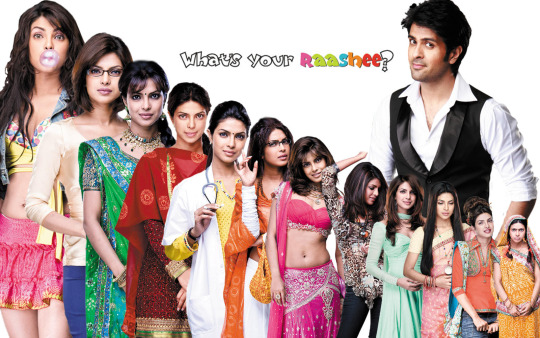
What's Your Rashee? is a 2009 Bollywood movie starring Priyanka Chopra, Punarvasu Sun who plays 12 different characters each representing a different rashi or zodiac sign
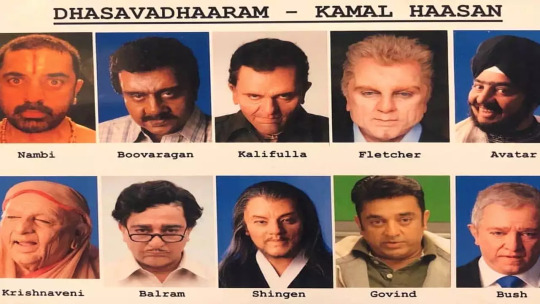
Kamal Hassan, Purvabhadrapada Moon played 10 different characters in the movie Dhashavataram (referencing the ten different avatars of Vishnu). He played the bad guy, the good guy and all the other guys.
This again points to not just the duality but also the multiplicity of Jupiter and literally being many different people.

Katy Perry, Vishaka Moon plays many different characters in her MV for Birthday
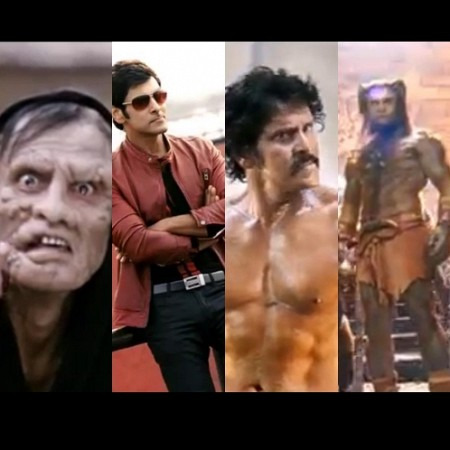
Vikram, Purvabhadrapada Moon plays 4+ different characters in the movie "I"

David Bowie, Jupiter in Vishaka atmakaraka, Shatabhisha Rising
Bowie had sooo many alter egos/personas, morphing from the flame-haired Aladdin Sane — a spin on “A Lad Insane” — to the clean-cut Thin White Duke with the greatest of ease. But his most famous alter ego was the androgynous alien rock star Ziggy Stardust who transported us to a glam galaxy far, far away in 1972 and 1973.

Lady Gaga, Swati Moon
"Lady Gaga" is in itself an alter ego as is being Mother Monster but she also has a male alter ego named Jo Calderone. She became Jo Calderone for her “You and I” video in 2011. The singer even went to the MTV VMAs that same year as Jo, walking the red carpet, opening the show, performing and sitting in the audience as the character.

The 1991 movie Dead Again stars Emma Thompson, Punarvasu Moon and Kenneth Branagh, Mars in Punarvasu 1h as two people who have double lives/past lives, the plot in itself is super Punarvasu coded with the same people playing multiple characters across multiple timelines (Punarvasu's deity is the personification of space and time)

Lily Tomlin, Punarvasu Rising plays 3 different characters in the movie The Incredible Shrinking Woman

Tatiana Maslany, Punarvasu Rising played many many different characters on the show Orphan Black.
The series focuses on Sarah Manning, one of several genetically identical human clones, and later on some of the other clones. The series raises issues about the moral and ethical implications of human cloning and its effect on identity. I had previously observed in an old post about how Punarvasu & Swati are connected to cloning and this is yet another example of the boundlessness of these energies.

Tom Cavanagh, Swati Sun, Venus in Vishaka atmakaraka played 15 different versions of his character in The Flash
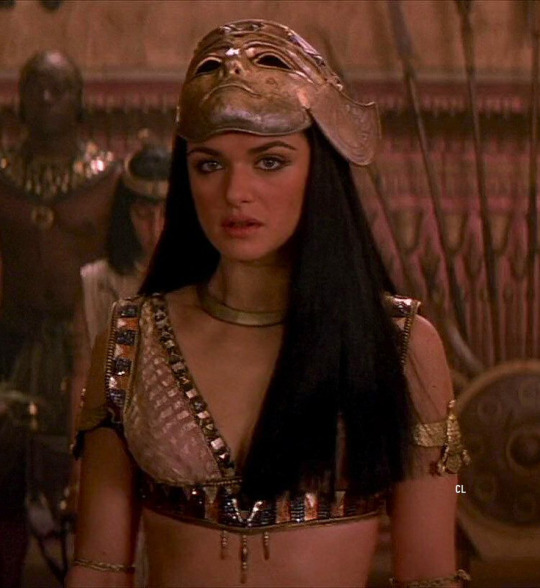
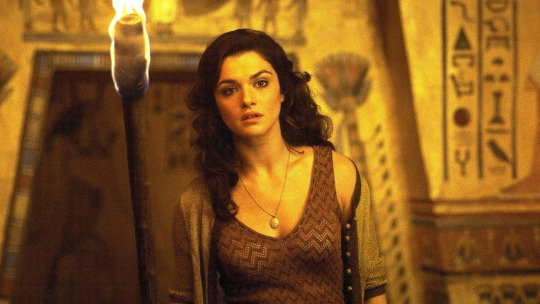
Rachel Weisz, Purvabhadrapada Moon played both Evelyn and Princess Nefertiti in The Mummy Returns

Hugo Weaving, Punarvasu Moon, Purvabhadrapada Stellium (mercury, venus and ketu) played 6 different characters in Cloud Atlas

In Bill & Ted's Bogus Journey, Alex Winter, Punarvasu Sun & Keanu Reeves, Punarvasu Moon play their evil versions.
The plot itself is very Punarvasu coded with Bill & Ted, two metalhead slacker friends who travel through time and beyond while trying to fulfil their destiny to establish a utopian society in the universe with their music.

Deepika Padukone, Swati Moon and Shahrukh Khan, Swati Sun played double roles as lovers who are reincarnated in a different time.
Jupiter is the guru or teacher. To be many things is what Jupiter teaches. It is kind of like being God and if one were to raise philosophical questions, you'd have to ask why did God create both good and evil? Why did he create joy and misery? There is no other answer except that one cannot exist without the other. Jupiter embodies this.
I hope this post shed some light on one manifestation of the boundlessness of Jupiter<33
xx
#astrology notes#astrology observations#vedic astro notes#sidereal astrology#nakshatras#astrology#vedic astrology#astro observations#astro notes#astroblr#jyotish#vedic astro#punarvasu#purvabhadrapada#vishaka#jupiter#swati#rahu
185 notes
·
View notes
Text
Nakshatras and Animal Symbolism
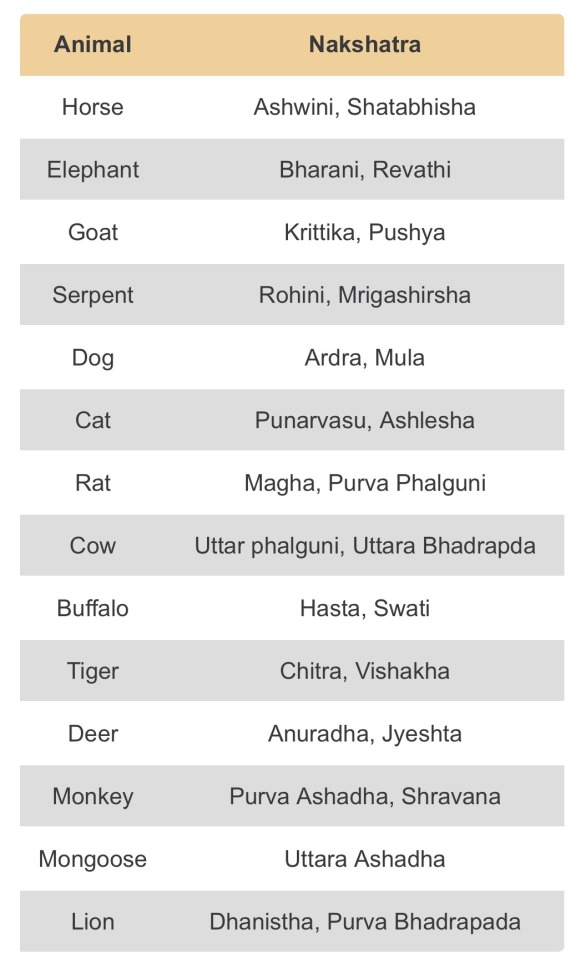
#astrology#vedic astrology#sidereal astrology#ashwini#bharani#krittika#rohini#mrigasira#ardra#punarvasu#pushya#ashlesha#magha#purva phalguni#uttara phalguni#hasta#chitra#swati#vishaka#anuradha#jyestha#mula#purva ashadha#uttara ashadha#shravana#dhanishta#satabisha#purva bhadrapada#uttara bhadrapada#revati
362 notes
·
View notes
Text
nakshatras as wild tiktoks II
for comedic purposes! part 2/3
Magha

Purva Phalguni

Uttara Phalguni

Hasta

Chitra

Swati

Vishaka

Anurada

Jyeshta

#astrology#astro#vedic#astro memes#astro notes#nakshatras#magha#pp#up#hasta#chitra#swati#vishaka#anurada#jyestha#rikastrology#nakshatoks
90 notes
·
View notes
Text
Vishaka + Anuradha + Shravana combo aesthetic ⚡






Themes: artistic, intelligent, creation, otherworldly, rules, society, barriers, challenges, relationships, love, friendship, fairness, balance, passion, occult, purification.
Song: Dark In My Imagination by Verona
#vishaka#anuradha#shravana#libra#scorpio#capricorn#7th house#8th house#10th house#astrology#sidereal observation#vedic observation#vedic astrology#sidereal astrology#astro observation#nakshatra aesthetics
60 notes
·
View notes
Text
youtube
19 notes
·
View notes
Note
Vishaka sun, uttara bhadrapada moon , and rohini rising? ✨
Likes milk
Thirsty pretty often.
Meditates
Could have a pet in your home, that you're not that close to. Like it's your mom's dog or something
Could have a speaking career. ex: writes speeches, you have a gift at being able to pull other people's thoughts out, and writing it for them.
Overthinks
Aesthetics: Girl next door vibes, soft skin, freckles, Mom of the group, winter color palette, or muted red autumn colors
9 notes
·
View notes
Text
Lesson of the day: Jupiter naks only gaf about their family, if you have to ask yourself “would i be considered family? Would they protect me like their own” you already know the answer. Don’t get, got.
Kindness does not = pushover
#We are players and sweet until were not#now you look stupid as hell#starzalign#vedic observations#purva bhadrapada#punarvasu#vishaka#the sweetness is heavy the hatred is even heavier act wisely 🫶🏾
46 notes
·
View notes
Note
hii i love your blog <33 if you haven't yet, can you do beauty of vishakha lagna? if you already did do you mind giving me the link to the post? I can't find it :(
thank youu so much :)
absolutely hun! i truly adore all of you vishakha lagna natives <3
the beauty of vishakha ⚡️: an analysis of destiny, love, femininity, and the creative path (part I)

⚡️taylor swift: scorpio vishakha lagna
i encourage anyone wishing to understand the influences of shukra, brihaspati, and vishakha to read this post, as i intertwine their respective principles throughout! additionally, as you read this post, please listen to this vishakha playlist i made for the full experience:
*MAJOR TW// i discuss a lot of potentially triggering topics, i.e. abuse and the s*x industry.
⚖️ in the beginning of the libra rashi, we learned how to accumulate merit throughout life from the punya cayani shakti (the shakti of the chitra nakshatra). bestowing the innate ability to find the equilibrium between difficulties and enemies (the virgo rashi/sixth house) and law (a characteristic of the seventh house). in doing so, chitra combines the qualities of both law and truth to produce fruitfulness. chitra is the lesson that shows us the power in righteousness, accumulating the astute intellect, and applying the dharmic principles throughout all aspects of life, while simultaneously savoring and enjoying the sweet progeny that is the fruit of our labor. it’s the joy of the most tired miner who eventually uncovers the rarest jewel of them all. in the heart of libra’s rashi is swati, who accumulates the most venusian energies out of the rashi, extracting the energies of shukra and wielding it’s airy element under the supervision of vayu (the god of wind). these natives have the unique pradhvamsa shakti, the ability to scatter like the wind. it can mold and move ether and transform the prana of the body. while having this shakti is incredibly powerful, these natives run the risk of destructing what the wished to only reconfigure. this disharmony is often a result of abiding in the shadow states of rahu and shukra. the ethereal winds may heal or harm but will always result in an end product of transformative breakthroughs or major energetic shifts. swati has this almost indescribable freedom of motion and movement and distortion. they are not held to the same responsibilities of others because they control what the concept of responsibility is in itself. their only fault is struggling with building consistent endurance and perseverance. however, this is the only way they can master their beautiful gifts and grant eternal existence to not only the things they morph/reconfigure, but grant eternal existence to their higher state. in the final portion of the libra rashi, vishakha’s fiery path leads us to the destination of scorpio, but this energy differs from chitra or swati. it is the dawn of divine combination, the swirl of potent energies. vishakha is the shelter of shukra, kuja, ketu, brihaspati, indra, and agni. what lies on this path is both energetic cultivation and the lightning that which calls upon the cosmic powers bestowed by the divine.
🌸 the entire libra rashi is linked to kamala, the tenth mahavidya goddess. the goddess kamala is traditionally said to be linked to shukra and she is considered to be the supreme form of the tantric goddess. kamala is also considered to be a form of goddess lakshmi (the goddess of material fulfilment and contentment, luxury, and fertility who is also said to be a manifestation of shukra). hence, kamala is regarded as the tantric lakshmi. in her mahavidya state, kamala also bestows matters of lakshmi and shukra when she operates in her higher state, such as prosperity, fertility, and good fortune. kamala is often portrayed as making the gestures of boon-giving and fearlessness. she sits on a lotus and holds lotus blossoms in her two upper hands, correlating to her name meaning “lotus” (symbolic of the lotus of surya). while kamala is not a divine consort to a male deity, she is representative of the independent and all-supreme divine mother. kamala does represent divine auspiciousness that is birthed from the mother but she is not completely auspicious or solely devoted to matters of prosperity. it is sometimes said she is referred to as rudra, “the howling one”; ghora or bima, “the terrifying one”; and tamasi, “the dark one”. kamala encompasses the ugra, crocodile features of shukra and the rejuvenating purity of shukra. a common misconception about venusian natives is that they all inherently favor matters of lakshmi and want the finer, more luxurious aspects of life and only seek to embody the utmost refinery of the soul. what people fail to realize is that these concepts cannot be fulfilled or implemented until you understand and worship alakshmi (the goddess of misfortune and grief) and cross the figurative muddy waters to sit on the highest plain of utgrasati.
🔪 to clairfy, ugra is not solely associated with the vimshottari venusian nakshatras (bharani, purva phalguni, and purva ashadha) but also purva bhadrapada and magha. ugra is often translated as “fierce”, occasionally “angry”, but actually it is said to truly mean “utgrasati”, the etymology of ugra. the term utgrasati means “one who sits at the highest plane”. this highest plane/realm being ugra. this is why it is common to see ugra dominant individuals, specifically women, who avidly play anti-hero hero characters or save others and use tactics of bodily discipline and weaponry in films. such as, lucy liu (possible bharani chandra) in “charlie’s angels”, uma thurman (bharani surya and magha lagna) in “kill bill”, and krysten ritter (purva bhadrapada lagna and magha chandra) in “jessica jones”. ugra has the ability to sit above on it’s higher plane but also is capable of bending down and elevating others to join them in this higher state. this is a quintessential characteristic of all ugra-influenced individuals. most people struggle with building the capability and personal foundation to save the lives of others, sometimes even ourselves. however, the ugra devatas, naturally wish to exalt their surroundings. the final venusian vimshottari nakshatra is the purva ashadha nakshatra. the shakti of this nakshatra is the varchograhana shakti. similar to the bharani, this shakti is correlated to the divine element of utmost femininity: water. as the varchograhana shakti uses the nature of water to bestow a heavenly like quality within and the ability to provide inner purification.
⛓ there is a specific cycle of death and rebirth that is referred to as samsara. in ancient texts samsarana, is said to mean "going around through a succession of states, birth, rebirth of living beings and the world", without obstruction. it is a metempsychosis of sorts that represents the transmigration of the soul. samsara is frequently contrasted with the concept of moksha: representing spiritual liberation and enlightenment. the cycle of samsara is often repeated and executed involuntary throughout the lives of most people, it’s materialistic nature satisfies those who value luxurious expression of lavish means. this phenomenon establishes a false illusion of ownership over the world and their surroundings and can leave one forgetting about the necessity that is moksha. people mistake samsara for freedom but, in reality, it is binding you from moving into the spiritual realm of ugra. beyond the mystical well of the conjunction of libra and scorpio, there is an abundance of freedom and radiating heat from the nakshatras mula, purva ashadha, and uttara ashadha. these natives of vishakha must learn to crawl out of this well of comfort and contentment. it can be tempting to remain indulgent in samsara and the waters of maya and struggle with seeing beyond our current surroundings. simply reveling in the connection of all occurrences to ourselves and refusing to break the shackles of identity.
🌑 kali yuga is the fourth and present age of the world cycle of yugas or "ages." it is also the end of the four ages that comprise a cycle and is often referred to as the dark age of spiritual degeneration. when one is submerged in the throws of kali yuga, it is said that god will come in the same nakshatra and save you. this is because each yuga has a corresponding nakshatra associated with it. the yuga avtaara will come bearing that nakshatra as their janma/chandra nakshtra and will spread light to the world.
⭕️ each yuga is said to be connected to a certain rashi: satya yuga is connected to aries; treta yuga is connected to cancer; swapara yuga is connected to libra; and kali yuga is connected to the final movable rashi of capricorn. makara (otherwise known as capricorn) is defined by being encompassed in mysterious illusions and symbolisms which cannot be easily fathomed nor defined by the exoteric cycles of nature. these mysterious revelations refer to the core meaning of the capricorn rashi: the tropic of makara. the tropic of makara is theorized to be the seat of the guardians of this globe, correlating to the direction of capricorn facing north. the north direction is ruled by kubera (the god of wealth and guardian of the world). therefore, capricorn is relative to the spiritual impulse which guides the world towards its destiny. it is the process in which one universalizes the collective energy of this physical plane. during the universalizing of the people of this earth, there will be hardship and suffering. thus, activating our spiritual mechanism of involuntarily aligning our consciousness with thought currents and vibrations from the higher realms of existence and the governing powers of the universe. due to this distancing of oneself from samsara, on the material or maya realm of living, difficulties and dissatisfaction with contemporary expressions of wealth may arise, but inwardly the manifestation of makara will bring peace with one’s spiritual purpose.
💸 kubera’s mythology and etymology is the perfect analogy for the purpose of capricorn. as mentioned previously, kubera is considered to be the god of wealth and the god-king of the semi-divine yakshas (typically benevolent spirits who dwell in nature). kubera is often depicted as a dwarf, with a complexion adorned with lotus leaves, and a big belly. he is described as having three legs, only eight teeth, one eye, and being adorned with jewels. these descriptions of deformities, such as the broken teeth, three legs, three heads and four arms appear only in the later puranic texts. he holds a mace, a pomegranate, or a money bag in his hand and is occasionally seen carrying sheaf of jewels or a mongoose with him. kubera’s seemingly “unusual”looks symbolizes the external distancing of oneself through the rashi of capricorn, in order to further oneself spiritually. the pomegranate is a symbol of prosperity and fertility, similar to kubera’s yakshas and moksha-bestowing lord ganesha (who is said to be fond of fruits with seeds). as the pomegranate is fruitful and bountiful and cleansing, as the jnhm (pomegranate), was once used to treat infections by the ancient egyptians. whereas, in tibet, the mongoose is considered a symbol of kubera's victory over the nagas—the guardians of treasures. in addition to the mongoose being the solitary, victorious yoni which resides in primarily the capricorn rashi.
💰in the vishnudharmottara purana, kubera is described as the embodiment of both artha ("wealth, prosperity, glory") and arthashatras, the science of wealth. his iconography mirrors his association with artha, as his complexion is described as that of auspicious lotus leaves. he is adorned in golden clothes and ornaments, symbolizing his wealth. his left eye, the eye of chandra, is yellow, symbolizing his internal harmony and imagination. the vishnudharmottara purana further describes his face to be inclined to the left, sporting a beard and mustache, and with two small tusks protruding from the ends of his mouth, representing his powers to punish and to bestow favors. his wife riddhi, representing the journey of life, is seated on his left lap, with her left hand on the back of him and the right holding a ratna-patra (jewel-pot). whereas, kubera holds a gada (symbol of dandaniti: the administration of justice, standards, shakti, and the quasi-divinity of royalty) in his left pair of hands. he is also depicted bearing a lion—representing artha as well. whereas, two of the treasures, padma and shankha, stand beside him in human form, with their heads emerging from a lotus and a conch respectively. the lotus/padma being symbolic of the minerals and jewels in the himalayan lake and the conch shell/shankha corresponds with higher frequency universal sounds associated with hindu belief of musical spheres.
🐚 the sound of the conch shell or shankha symbolizes the sacred om sound (the essence of ultimate reality and conscience). vishnu holding the conch represents him as the god of sound. brahma vaivarta purana declares that shankha is the residence of both lakshmi and vishnu, as maa lakshmi is the consort of vishnu. due to shankha being the abode of lakshmi, bathing by the waters led through a shankha is considered as bathing with all holy waters at once and frees one from the cycle of births. it is even said the mere sight of the shankha dispels all sins as surya dispels the fog.
🌞 the third note in indian raga (a pattern of notes having characteristic intervals, rhythms, and embellishments) is the sweet sounding gandhara note. it is the first note that sounds harmonious and is extremely auspicious when audibly consumed. it is a good omen that is considered to be deva loka and determines whether a raga will be joyous major or sad minor. this essential role of determining the character of the raga, is symbolic of surya who rules our very self and personality in vedic astrology. interestingly enough, the swapta swara gandhara originated from the sound of a goat (the emblem of capricorn). now, the conch shell has been incorporated as one of the eight auspicious symbols (ashtamangala). the right-turning white conch shell (therefore, moving in the direction of yang/surya), represents the elegant, deep, melodious, interpenetrating and pervasive sound of buddhism, which awakens disciples from the deep slumber of ignorance and urges them to elevate oneself and ensure welfare of others. in this state/sound, we have learned the power of authority, judgement, and guardianship from kubera; how to cleanse and awaken ourselves in the shankha, determine our self/spirit in the solar purity of gandhara; and we are now able help others and embody utgra sati.
🌊 one of the aquatic nature of the water-, earth-, or mine-dwelling nine treasures (or nidhis) is the makara/crocodile. in the throws of kali yuga, it feels as if you are drowning in a deep, crocodile-infested trench. here in the capricorn rashi, even brihaspati is debilitated. in order to free ourselves from this trench, we must turn to the other guru: shukra. in kali yuga, another graha must uplift and aid lord brihaspati and the guru to the asuras is able to do so. because, in order to uplift others, we have to elevate ourselves so much so that we will not fall into the ditch of the shankhas we originally cleansed ourselves with. if our spirit is not stable enough, we will be incapable of helping others, as you cannot pour from an empty shell. because the ugra devatas are confidence in their internal composition and stability, natives of shukra have the ability to uplift those drowning in makara. this reflects the nature of the nakshatra of shukra and shankha: purva ashada. because of its residence in the sagittarius rashi, purva ashadha natives have the innate ability to battle, fight, and educate their surroundings to beautify the lives of others. this is why some astrologers theorize the yuga avatar is going to come in the nakshatra of purva ashadha, bearing both the knowledge of shukra and brihaspati. dharma can then be reinstatated. this is why the agni purana states that kubera should be installed in temples as seated on a goat and with a club in his hand. the goat being symbolic of the symbolism of makara and the club showing what it means to truly fight for others and the weaponry of the mind by simply aligning the opposing sides of knowledge within ourselves, embracing the guru of duality (shukra) and the guru of wisdom (brihaspati).
💎 similar to the first mahavidya kali (representative of shani), the tantric form of kamala embraces both the light and dark undercurrents of life, for she is totality. she understands the maya of samsara; the waters of shukra, shankha, and rudra and the bharani/purva ashadha shaktis required to cleanse ourselves; the power that results from the combination of ugra and tara, and the necessary duality of lakshmi and alakshmi. you can not reap the diamond, without sifting through the coal (chitra). you cannot gain or lose in life but only morph and reconfigure your surroundings as you flow through the currents (swati). in vishakha, you cannot reap the fertile crops of kamala without the ability to achieve our goals abundantly through the force of time (kali).

⚡️grace kelly: libra vishakha lagna
⚖️ in the libra rashi, particularly the vishakha nakshatra, we see themes and elements of sexual abundance and overstimulation of shukra driving one to exploring sexual spirituality or, in more disturbing circumstances, towards harmful sexuality. it is a reoccurring theme for western libra celebrities to be candid about their participation in tantric acts. think of celebrities like gwyneth paltrow (libra chitra surya), sting (libra swati surya and chandra), scarlett johansson (libra vishakha surya), sean combs (libra swati surya), and heather graham (libra swati chandra) who have been frequently quoted for their appreciation of tantra. however, it is important to note that the common western popularization of tantric practices is typically inaccurate and both neglects the vast majority of nonsexual practices of tantra and sensationalizes what seems most appealing or convenient at that time. tantra should be taken seriously and not just flirtatiously used in a terminological sense. another person’s culture, religious traditions, or spirituality should be approached with respect and not used as a trendy fashion statement.
📖 the tantric books themselves act as a guide and explorative avenue for growth and harnessing our libido and intertwining that with our spirituality. one of the many characteristics of tantra is its use of mantras. while i implore you all to delve into the tantric books to familiarize yourself with this concept, i will try to sum up this concept as easily as possible. in the chapter pertaining to mantras in tantra, terrestrial water is drawn by the power of surya and rises to the solar region. it is this power of the sun that is referred to as rudra. the three gunas, sattva, rajas, and tamas, are respectfully considered to be the creatrix, preservatrix, and destructress, as these three shaktis whose forms are meditated upon in the solar orb at the three sandhyās. in the creation, preservation, and destruction, which take place in our everyday lives: the morning sandhyā is a period of creation, the noon sandhyā is a period of preservation or maintenance, and the evening sandhyā is a period of destruction. in the morning, the world is freed from sleep, the tāmasa shakti of dissolution (the dominant shakti at the time) is loosened from the grasp of darkness and awakes. during the night, the universe, although existing as before, remains covered by a film of tāmasa, “so that, notwithstanding its actual existence, it is not perceived by jīvas in a state of sleep. for this reason, the universe must then be considered “non-existing,” otherwise dissolution' has no meaning.”. in dissolution, the world of jivas exists in the womb of prakriti in a subtle form as seeds and then later the first blooms of creation appearing through the power of brahmashakti. during this daily of form of creation, brahmashakti’s shakti, meaning “to make things able”, bestows the power by which things can happen or transpire. that power belongs to brahman/god and can manifest in a variety of ways. at sanndhya, the sadhaka worships the three powers of the brahman as the creator (brahma/brahmani), the maintainer (vishnu/vaishnavi), and the destroyer of all things (shiva/maheshvari).
✨ in the evening, when the world of jivas participated in its daily activities and the weary of body seek to enjoy the blessing and balm of the sleep of dissolution, it is then that shivashakti, she who gives the unalloyed bliss of the enjoyment of the balm of dreamless sleep and is the destructress of the universe, appears (in order to provide that balm) in the solar orb in the form of maheshvari. she covers life with the veil of tamasa shakti and drops the curtain of sleep on the samsara, the maya playground of error, and dispels from the minds of jivas all the impressions which they have received from the outer world. tantra describes mahāprakriti as the aggregate of the three shaktis of creation, preservation, and destruction who is composed of the three gunas of sattva, rajas, and tamas. “it is not that when one of the guna is in play that the other gunas remain dormant. the eternal play of creation, preservation, and destruction is ever equally present in her, but we fail to recognize this with our imperfect vision. let us suppose, for instance, that we see a hungry tiger killing a deer. we think that it is the play of destruction of the mother of the world. but a keener insight into the incident will make it clear to us that even in this play of destruction there equally exists, in succession, the play of the three gunas of her whose substance is the three gunas. we see only the destruction of the deer. but although this is a case of destruction so far as the deer is concerned, it is a case of preservation if we look at it from the point of view of the tiger. for the tiger's body is preserved by the blood and flesh of that deer. again, the generation of the tiger's cub is due to the maintenance of the tiger's body. consequently, what is destruction for the deer is creation for the tiger's cub, just as our own eating involves destruction of the seed-power of the tree, preservation of ourselves, and creation of our children.”.
🌬 this is why it must be understood that in mahaprakriti, the three manifesting forms of the three gunas exist equally and always, but they appear as creation to some, preservation to others, and destruction to the rest. for example, the same water which quenches the thirst and gives life to one man may give death by drowning to another. what do you associate water with? the power of preserving life or the power of destroying it? the makara is born in that same water and lives in it and will not survive for a long period of time without it. are we to understand from this that water has the power of creating and preserving life? the same sunshine that destroys the life of the wayfarer oppressed by summer heat in some far-stretching plain gives life to the cold traveller whose limbs have been stiffened by the fall of snow. does this indicate the life-destroying power or the life-preserving power of sunshine? without sunshine, trees, shrubs, and flowers would dwindle and die. however, this very sunshine draws water from the earth and carries it to the solar orb.
☀️ the energy which draws water from the earth is rudra, meaning “terrible”. the same solar energy which previously manifested as a nourishing different form of energy then assumes a tamasic role, due to its purpose for drawing water. this is why, although it is solar energy, it is simultaneously rudra. thus, sunshine is called “rudra”. the term “sun” is used to describe a mass of compact energy, while rudra or sunshine is the name of the rays which it scatters off of its surface. tantra states, “the difference between the sunshine and the sun is the same as that between the waves of the sea and the sea. just as in the sea, water exists in a collected form, so in the solar orb energy exists in such form. just as in the sea single waves heave eternally, so do waves of energy in the solar orb. it must, therefore, be understood that wave is the same thing as water, and sunshine is the same thing as sun.”. the solar orb lies above (terrestrial water) and terrestrial water lies below (the sun).
⚡️ the issue with vishakha natives is they struggle with their perception of the three forces (creatrix, preservatrix, and destructress) and the gunas. they act as the tiger of mahaprakriti, the yoni of vishakha, and wish to stalk their prey to feed and preserve their ambitions, only to find themselves blinded by their pursuit and embodying the forceful state of rudra and drying their well of makara before they can peacefully drink from it. thus, eradicating their own personal preservation of spirit. they become blinded by power, this, in culmination with their innate spiritual abilities, can result in a multitude of dangerous behaviors (that i will elaborate later on).

⚡️vanessa paradis: libra vishakha lagna
🪷 during my hiatus from this platform, i heavily divulged into venusian manners and projections. as i was perusing the pages of “the life of the mind” by hannah arendt (purva phalguni chandra), i was further awakened to the cosmological significance of the teaching of shukra vs brihaspati.
🪬 i quote arendt’s words on understanding the thinking process of the mind from a metaphysical (the transcendence of reality) vs philosophical (the fundamental essence of reality) standpoint: “was it not precisely the discovery of a discrepancy between words, the medium in which we think, and the world of appearances, the medium in which we live, that led to philosophy and metaphysics in the first place? except that in the beginning, it was thinking, that was held to reach truth or true being, while by the end the emphasis has shifted to what is given to perception and to the implements by which we can extend and sharpen our bottle he senses. it seems only natural that the former will discriminate against appearances and the ladder against that thought”. it was often considered that both metaphysics and philosophy stem from the origin of poetry, an undoubtedly knowledgeable plane. therein lies a distinct need for intellect and knowledge in order to further cosmological understanding. similar to the kabbalah, brihaspati and shukra are intertwined via the chesed (jupiter) and (netsach) branches, which are immediately connected to each other. chesed is the love in which one feels for god and is the basis of mercy. it’s the charitable sustenance that nourishes those around someone. this is why it is able to channel netsach, as shukra is the mercy incarnate, hence it’s connotation with the “fall” or lucifer himself. whereas, jupiter gives thanks for the mercy and receives. venus is constantly discharging (hence, the popular “shukra/s*men” association) and projecting its desires onto the metaphysical. brihaspati is the nourishment within, his process is not as direct or refined, but slower and atomic. similar to how fat takes awhile to accumulate in the body, so too do brihaspati’s works take awhile to accumulate into philosophical fruition.
🫧 a primary example of this distinction is david lynch (libra vishakha lagna) in an interview with charlie rose in 1997. he describes his distinction between daytime (the summit of terrestrial waters) and night time (the peak of jīvas) dreams and the energetic properties of both. he states he prefers day dreams, as it is a meditative practice in which “the dream takes over” (aka the waters of the outer plane). furthermore, he describes this practice as an “unraveling” without intervention. the presentation of creative works is revealed to him, as the turbulent spirits of rudra (the storm) are eclipsed within the mind. this is ultimately why many vishakha natives (specifically lagna placements, as it is the sun being eclipsed by the energies of indragni) benefit from utilizing their minds during the day to create and refine their artistic endeavors. for example, many venusian/jupitarian ceos have been quoted to use the daytime as a primary form of artistic discipline, such as tim cook (libra swati surya native) who was quoted to arise at “3:45 am” and dan lee (libra vishakha surya native) was quoted to arise at “3:30 am”.
🎨 later in the interview, he states that when going to therapy, he asked the therapist “could this process i am going through affect creativity?”. when the therapist agreed that aiding in his mental distresses could create blockage in lynch’s creativity, he stopped going to prevent further artistic stifling. lynch later says he does not understand the very notion of creativity, but he does understand the “the manifestation of the idea in the material world” and the beauty of such; alluding to the importance of trusting the maddening process of artistry.
🪄 he sacrifices the stability of his mind in the future for the purpose of arousing creativity in his works. he wants to nourish the material plane with the artistic fats of the mind. this is why in works by jupitarian natives, such as twin peaks (directed by david lynch), casino (directed by scorpio vishakha surya and aquarius purva bhadrapada chandra native martin scorsese), and taxi driver (also directed by martin scorsese), there is this distinct build up or accumulation of insanity. it’s losing yourself to the creativity of the mind and for the sake of encouraging the poetic nature of philosophy. it’s the unraveling to receive and bestow mercy. it’s the masculine principle of the mind — philosophy. shukra is contrasted, in the sense that brihaspati is the benefic masculine and shukra is the malefic feminine (when untamed). it’s the dissent into the madness of repetition. it’s the “fall” personified. brihaspati remains conscious of his choice to crawl into the darkest depths to further the receptivity of the mind, but shukra does not. shukra slowly becomes cloaked in the veil of illusions (rahu) and steadily starts to lose all grip of the metaphysical. time and time again, shukra works capture heavy or disturbing mental imageries that illustrate the mind of the torturers in dante’s inferno (written by a vishakha chandra). vishakha acts as the astral guide to dante as he journeys through shukra (hell). symbolizing shukra’s corrosive mental state, think of films such as “black swan”, “to the bone”, “mad love”, and “girl, interrupted” who were largely influenced by venusian natives, all of which resemble the harsh realities one’s venusian-bound mentality imposes on their surroundings.
🦋 this distinct harshness of intellect is further exemplified by possible purva ashadha native james mangold’s interview about why his film, “logan”, had to be rated R. mangold responds that emotion (brihaspati) and bloodshed (shukra) are almost the same. it is the primordial, renaissance, biblical fate of film and fairytales. the mature connotation of rated R films gives mangold the freedom to explore his creativity without restriction of intensity. it is poetry in the sense of unconsciously (metaphysical pursuit) and consciously (philosophical pursuit) depriving the mind of sanity for the sake of art.
📕 this artistic difference is ultimately why brihaspati pasts the testaments of sanjeevini vidya through repentance and mercy and shukra fails and is cursed as a result in the following story of sanjeevini, vidya, shukra and brihaspati:
🪞“the devas and asuras were at war from time to time. however, whenever there was a war, shukra brought the slain asuras back to life with his sanjeevini vidya. this meant that the devas had to fight the same asuras repeatedly. they went to their guru brihaspati and requested that he learn this vidya. they suggested that brihaspati send his son kach to shukra in order to learn the secret sanjeevini vidya. shukra was very fond of his daughter devayani. so, the devatas suggested that kach also become friendly with her. brihaspati at first did not agree to this scheme. but later he decided that it was the best way for the devatas and sent his son kach to shukracharya. kach went to shukra and requested to be his disciple. all the asuras were unhappy about this. they warned shukra that this was a plot to learn the secrets of shukra. they were not in favour of their enemies’ guru’s son becoming shukra’s disciple. however, shukra could not say no to a request to learn from him. so he conditionally accepted kach as his disciple for a period of 1000 years only. kach was a devoted disciple. he served shukra with all his heart and soul. devayani was very impressed by his great devotion and faithfulness. she fell in love with kach. she was always watchful for him and would worry if he was late. kach, however, did not have any romantic feelings for her. he saw devayani as his guru’s daughter and nothing more. as the 1000 years of kach’s agreed upon tenure as a disciple of shukra was nearing its end, the asuras were uneasy. they plotted to kill him so to prevent the knowledge of shukra being taken back to brihaspati. the presumed that since devayani was in love with kach, he would have easy access to the sanjeevini vidya. they plotted amongst themselves to kill him. when kach went to graze cattle in the forest they killed him and abandoned his body for the wild animals to devour. devayani, however, was watching for the return of kach. when he failed to return from the forest she alerted her father. she declared that he was killed by the asuras and insisted that her father should go and look for him. though shukra did not believe her he investigated and found that it was the truth. he then used his sanjeevini vidya to bring kach back to life. the asuras failed in the first attempt on kach’s life. but they were still eager to kill him. the second time they killed kach they ground his body to a paste and put it in the sea. however, shukracharya used his knowledge and brought kach back to life again. the asuras were still not deterred. they killed kach yet again and burned his body. the asuras then took these ashes of kach and dissolved it in a wine goblet. they served this wine to shukra and he drank it. devayani was worried about the absence of kach. she again tried to persuade her father to find him. shukra was fed up with repeated requests and told her to forget about kach. but devayani was not easy to put off. she threatened that she would kill herself if kach was not found. shukra was very attached to his daughter and called out asking kach where he was.
🔥 “kach replied from the stomach of shukra that he was here. shukra asked how he entered his stomach and kach narrated the whole story. when shukra asked him to come out he refused to do so, saying that if he did, it would kill shukra. he did not want to commit the sin of killing a guru. deveyani suggested that her father teach her the sanjeevini vidya. this would enable her to bring him back to life after kach exited his body. shukra had no choice but to teach devayani the sanjeevini vidya. while he taught her, kach who was in his stomach also learned the same. shukra then ordered kach to exit his body. kach came out of his body and shukra died. devayani then brought her father back to life. shukra was furious with the asuras and cursed alcohol for making him speak what should not be spoken. as kach’s discipleship was over he wished to leave. devayani wanted to marry him as she was so in love with him.
💧”the king of the asuras was king vrishparva. he had a beautiful daughter sharmishta. shukra was the guru of the asuras. this meant that sharmishta and devayani were good friends. once they went to a lake with their friends. they left their clothes by the lake and were playing with their friends when suddenly indra happened to come that way. the group of friends rushed to the banks of the lake and hurriedly put on their clothes. in the confusion, sharmishtha inadvertently wore devayani’s clothes. this annoyed devayani. she rebuked her friend saying that it was improper for sharmshitha to wear her clothes. though sharmistha explained that the incident was not intentional and only happened because of their being in a hurry, devayani would not relent. she was still angry. sharmishtha lost her temper as well and taking off devayani’s clothes, threw them into a dry well and went back home. devayani was angry for a while and then started calling for help. at this time king yayati was hunting in the nearby forest. he approached the well looking for water to quench his thirst when he heard the cries of devayani. he rescued her and covered her with his own clothes. devayani thanked him profusely. she explained the incidents that led to her predicament. she requested him to marry her since he had seen her unclothed. he replied that since he was a kshatriya and she a brahman, the marriage would not be proper. she replied that it was their destiny that this had occurred. king yayanti agreed. when devayani went home and recounted the incident to shukra he was furious. he threatened to leave the asuras but the asura king vishparva begged him to stay. king vishparva asked devayani what her wish was. she said that she wished that sharmistha should go with her as a maid with her 100 maids when she married. so, when devayani married king yayati, sharmishtha went with her 100 maids to her marital home. when shukra gave his daughter in marriage to king yayati he warned him that if he took any woman other than his daughter to his bed he would bear the consequences. king yayati agreed. devayani and yayati had two sons. however, when king yayati came upon sharmistha one day he was attracted to her. she explained that she was a princess but brought to his palace as a maid by devayani. she requested him to unite with her. yayati agreed and had a son by her. she then had two more sons by him. when devayani found out about this she was very angry and complained to her father. king yayati explained the reasons for his actions but shukra would not relent.
🌫 “shukra cursed him with premature old age. since yayati knew that this would also affect the happiness of devayani he asked for forgiveness. shukra then said that if he found a person who was willing to take on the curse, he could transfer it to that person and live a happy life. all of yayati’s elder sons refused to exchange their youth for his old age. the third son that he had by sharmshitha named puru was willing to take on the curse. yayati enjoyed his youth with devayani for 1000 years before he realised how worthless sensuality was. he returned youth to puru and renounced the world. shukra’s representative then explained to the audience in king vikramaditya’s court the lineage of yayati. he was the son of nahush. he divided his kingdom into five and gave one share each to each of his sons. the five sons of yayati were the ancestors of the five clans. one of his descendants was king dushyant whose son was bharat. it was bharat who adopted bharadwaj, brihaspati’s son. once brihaspati desired his brother’s wife mamata. when he approached her, she refused him saying that she was already pregnant. but he persisted and the child her in her womb also objected. he got angry and cursed the child”.
video references: https://youtu.be/-OXhMc0wpes & https://youtu.be/1tCzthgGxuo

⚡️ sydney sweeney (libra vishakha lagna) as pictured sucking from the intoxicating/maya mouth of rudra/ardra native to renew herself —as discussed in the character analysis below
🌀 the aforementioned winding and webbing of shukra and brihaspati is both mythology and a metaphor for the love lives of vishakha natives. there are three evident manifestations of vishakha natives: the innocent, purity state of the creatrix; the wealthy, accumulative state of the preservatrix; and the awakened, domineering state of the destructrix. all of which are evidentiary of the shattered minds of creativity within the natives’ sensuality. a primary and popular example of all stages of the vishakha mind in the midst of the romantic waters of rudra is none other than cassie howard (played by vishakha native sydney sweeney) in “euphoria”.
💕 the object for cassie’s addiction is love (as devayani’s). cassie’s origin begins with her turbulent childhood of growing up with an alcoholic mother and an absent addict dad. being sexualised at a young age by older men and the absence of a masculine/solar figure in her adolescence primed her for a dependency on male validation. this unfortunate storm of toxicity has created a lot of backlash with avid viewers of “euphoria”. this poises the question as to why the public despise women like cassie, but secretly relate to her needs in private? this is because vishakha/jupitarian women personify what we are so afraid to understand or become.
🔮 cassie embodies so many of the things the public ridicules, the things we collectively recognize are objectively and incredibly annoying. her problems pale in seriousness compared to the others, as she is not suffering from suicidal ideologies or abusive relationships as her peers are, and so her struggles seem out of touch. cassie’s primary dilemma is that she is sleeping with her best friend’s ex-boyfriend (played the rudra/ardra native jacob elordi). she falls into a depressive spiral and treats her friends badly and drinks in excess (immersing herself in the intoxicating jīva nature of alcohol & symbolic of vishakha’s correlation to liquor and intoxicating spirits). cassie throws herself at a man who clearly does not want her. when she is exposed by a fellow character, she deflects the blame with panicked vindictiveness. cassie is completely wrapped up in herself and her struggles, to the point where she doesn’t seem cognizant of the power and privileges she still possesses (she lies in the mirage of the night). this is why it easy to dislike her, because it is relatively easy to see ourselves in her destruction. while the problems faced by other characters might be so far away from our own lives that we can safely say we would do it all better and never let ourselves get in those dangerous situations, cassie’s messy emotionality and teenage angst are uncomfortably close. it is no surprise then, that cassie has become an emblem of equally painful-to-follow “toxic” female characters. when cassie asks her sister whether she looks different, shortly after finding out she’s pregnant with her ex boyfriend’s baby, her sister becomes a stand-in for the audience, lashing out at her sister and pointing out how absurd she sounds. for the audience, the dramatic irony is even more potent: we know that while cassie is experiencing her own personal trauma, she was also totally unequipped to deal with her ex boyfriend’s (who had just experienced a violent hazing at the hands of his fraternity brothers, and was coming to the crushing realization that he would never be a professional athlete), which many viewers interpreted as an unwillingness to engage with it too.
🤍 in the beginning, cassie aligned with the creatrix path: the path of saraswati. saraswati, being the goddess of knowledge, speech, and wisdom, bestowed cassie with the ability to gain confidence in vocalizing her needs to others while simultaneously abiding in this aura of purity. during this time, she incorporated white-colored outfits (such as white cropped hoodies, butterfly tops, newspaper dresses, and cow print skirts - a subtle nod to her additional solar influences). this frequent coloring of white imitates the unblemished and untouched nature of saraswati and shukra abiding in its auspicious state. white, being the reflection of the sun, additionally attracts the solar perception onto oneself. as saraswati’s form dissolved herself to become the gayantri mantra dedicated to the sun/surya. thus, a hint to the submissive, yet solar-craving nature of the creatrix path who longs to fully harness the power that lies within themself.
🪄 cassie transcends to the preservative path of the preservatrix in later episodes. this is the path of lakshmi. lakshmi is the goddess of wealth, fortune, maya, power, and love. she is the conch (shell) that flows against the turbulent waves of rudra to the destination of the shoreline (the height of cosmic awakening). lakshmi is often associated with gold and occasionally pink/red. in this period, cassie becomes more confident in her sexuality to garner solar energy. she attends more parties and begins to become more sexually aroused. her usage of gold is evidenced by her frequent pairing of gold hoops, studs, and necklaces with her outfits. additionally, she adorns herself in frequent pink outfits (such as the pink swimsuit, crocheted top, floral and puffy dresses, and sweatpants). this is a reminder of her feminine nature and to emphasize and remind her of her once approachable/creatrix nature. the color pink, being a combination of red (kuja/mars) and white (shukra/venus) hints to her progression in angst and anger as a character—she now lies in the midst of flames. cassie faces the turning point of love: will she fall as devayani and the venusian lucifer once did or transcend yet again?
💙 while cassie has yet to enter the destructrix stage of kali in the show, we are alluded to her potential. kali is the goddess of time, change, creation and destruction. she lies in the center of the yoni as she has the innate, feminine ability to both bestow life through birth or take life through the sexual/tantric magic of intercourse. this is the stage in which a woman has learned the importance of spirituality and wants to guide herself to finding love with someone who is trustworthy and empowering. she has abandoned the tempting powers of the jīvas and now arrives at the shore of spiritualism with promise. kali is often associated with saddening and authoritarian nature of blue, as evidenced by cassie wearing a blue two piece set in the scene where she breaks up with nate (her boyfriend). she lies in wait for her destiny, this is ultimately why kali is the first mahavidya in spiritual ascension.
🖌 now, during this evolution of style and love, you may have wondered why the mahavidyas associated with their respective states are not given in chronological order. this is because all goddesses and mythological beings exist in a stage of constancy. the goal for cassie, vishakha natives, and all is to harness the powers and properties of all tantric knowledge not just the lessons that are most appealing and favorable at the moment. embody the creatrix, the preservatrix, and the destructrix. do so with feverish enjoyment because in the shoreline of destructrix, you must either lose yourself to the maddening, carnal knowledge within or perpetuate the cycle of romantic mistreatment. refute the manipulation you once felt, as have other vishakha natives (such as beyonce, taylor swift, lana del rey and katy perry) who have all been taken advantage of and embody what the divine feminine means to you.

⚡️lana del rey: libra vishakha lagna
🏺 with jupitarian women, there is often a frequent upset or rampage around the degree of masculinity or femininity they choose to present themselves as. for example, miley cyrus (scorpio vishakha chandra) has been quite candid on the public expectations for her to adhere to a “super femme” identity. ruby rose (pisces purva bhadrapada surya) remains vocal about their journey towards gender identity and its intertwinement with authority. debbie harry (pisces purva buadrapada chandra) who has frequently detailed the role of her bisexuality and “masculine drive” in her musical career, detailing how many thought she was a man. a possible reasoning for this dichotomy is their importance in the stratosphere of the feminine vs male gaze.
👁 if have you scrolled through tiktok or watched any of the numerous video essays on youtube, it is likely you have heard of the term “male gaze” or its possible antithesis: the “female gaze”. the “gaze” is a term that describes how viewers engage with visual media. once originating in film theory and criticism in the 1970s, the “gaze” refers to how we look at visual representations, such as advertisements, television programs or cinema. the “masculine gaze” showcases, or rather embodies, the sexual politics of the gaze and suggests a sexualized appearance that simultaneously empowers men and objectifies women. in the masculine gaze, women are visually positioned as an “object” of heterosexual masculine desire. their feelings, thoughts and personal sexual drives are less important than her being look upon by masculine desire.
🏹 the concept of the male gaze was originally introduced by scholar and filmmaker laura mulvey (purva bhadrapada ketu native) in her 1975 essay titled “visual pleasure and narrative cinema”. mulvey argued that old hollywood films catered to a deep-seated drive known as “scopophilia”: the sexual pleasure involved in looking. she argued that most popular movies are filmed in ways that satisfy/engage masculine scopophilia. visual media that respond to the masculine gaze tend to sexualize women for the purpose of entertaining the masculine viewer. as mulvey once wrote, women are characterized by their “to-be-looked-at-ness” in cinema. they are viewed as a “spectacle” and inversely men as the bearer of the look”. this objectification of women rarely takes regard for their own voice and subjectivity.
💐 in the “postman always rings twice” (1946), we see a primary example of the masculine gaze. in one of the scenes, the audience is introduced to cora smith (played by brihaspati atmakaraka native), the film’s lead female character. utilizing close-ups, the camera forces the viewer to observe cora’s body. in doing this hyperfixation of cora’s figure, the film is inherently creating a mode of looking that is sexual, voyeuristic, and observing cora solely through the lense of the male protagonist’s point-of-view. this also establishes some important plot points: that the hero desires cora and cora is cognizant of his lust. however, it is clear the strongest message in the scene is that cora is sexy. even if a viewer isn’t attracted to cora, the scene still makes sense. a lifetime of seeing women sexualized in television, music videos and advertisements has made many individuals immune to witnessing the comfortability of assuming the masculine gaze.
🃏a more contemporary and famous example of the masculine gaze is harley quinn (played by gemini punarvasu lagna conj. brihaspati and surya native margot robbie) in the film “suicide squad” and “birds of prey”. the most telling example of “birds of prey’s consideration on the feminine gaze pertains to harley’s style. in “suicide squad”, harley quinn’s primary look features a red-accented baseball tee with “daddy’s lil’ monster” inscribed on her chest. the shirt showcases harley’s body as she strips down in front of a predominantly male audience in order to put on the item of clothing. her outfit and performance was designed to cater to the fantasies of a specific kind of viewer in mind, as opposed to the character actually catering to the character wearing it. whereas, harley’s aesthetic in “birds of prey” is consistent—shorts, t-shirts, heavy makeup—but the details and the subtext of the film’s director cathy yan’s (birthday unknown) portrayal of harley opposes “suicide squad” filmmaker david ayer’s (uttara ashadha surya and magha chandra) interpretation of harley. for most of harley’s screen time in the film, she is adorned in a loose-fitting t-shirt patterned with her own name in all caps and a bold font to indicate she is her own. in “birds of prey”, the camera follows what harley is doing, not typically following how good her figure looks in the process. for example, in the trailer for “suicide squad”, there’s a moment where harley steals a purse from a busted window display. it is hard to visibly see what accessory she stole because it was out of focus. the purse might be what her character cares about in that moment, but the camera shot focuses on her figure as she bends over in her leather shorts to pick up the bag. in a way, that is what the primary focus is and what the film is saying that matters.
🪞it is not the existence of this gaze that does the damage but it is seeing it in constant repetition that does. when you’re an impressionable audience growing up caring about films or television and you see girls and women in those films treated in this fashion, it leaves a profound impression. the point of this example is not that the masculine gaze should not be allowed to fantasize or that it is inherently negative, but rather the need for more diverse representation of lives, needs, and wants of women in film. the “daddy’s lil’ monster” shirt makes an appearance in “birds of prey” as well, as harley insists on keeping it for sentimental reasons. the shirt and all it represents does not need to be destroyed and can even be kept and recalled fondly. the primary point of pointing out the masculine lense is that there needs to be room at the table for everybody else. historically, visual arts has favored one specific gaze, but these stories appeal to and owe their success to audiences spanning over multitudes of different demographics and backgrounds—not just those favoring this gaze. now that we have a basic introduction of this topic, let’s delve deeper into what this means in vedic astrology and mythology…
🤍 traditional associations with femininity vary across the multitude of regions and cultures on this earth. therefore, it is important to stress that the feminine gaze or concept of femininity is not concrete in its definition or associations, but varies from person to person. for example, the traditional western association with femininity (primarily by european-americans in the 1950s) tends to view femininity from a virginal or purity-based lense. this consists of a focus on sterility and illusionary appearances, sexual fragmentations, and voided perceptions. denying the maturity of the flesh and focusing on latent p*d*philic associations like associating physical femininity with a smaller, waify stature; soft voices; and subservience. this can be quite a restricting perception as it ignores, sexualizes and denies the feminine experience for those who do not fit this specific stereotype. therefore, resulting in traumatization, mental restriction, and worldly duality (often associated with rahu). eventually producing neuroticism and causing the masculine gaze to use escapist fantasies of the feminine life force that originate from their insecure reality or political distortions. this perceives femininity to be a dependent infantile state where masculine individuation is not a reality.
🍵 conversely, in eastern countries (such as india, nigeria, kenya, etc.), femininity is not viewed through a traditional lense but rather an ancient one. it it is not to be demonized for its fixation and roots in the physical plane, but venerated and cherished for its primary spiritual abilities, as women are the gates to the ascension from materialism to the divine path. this is why women in eastern cultures are often believed to hold the power to revealing the true state of one’s soul, the source of true sexual liberation, and the source of all gnostic knowledge. notice how these ancient beliefs are not focused on the physical appearance of women, instead their evil-destroying and life-affirming abilities. it does not dehumanize the gender of women as a whole by solely contributing their femininity to “softness” or looks, it rather glorifies the gender as a whole and recognizes the intuitive power us feminine beings can hold. as a child, i was taught this eastern perception of femininity breeds true masculinity, as it does stress molding or conformity in order to embody your higher self. instead of telling you how you should be (in the case of western-european femininity), eastern femininity brings emphasis to who you already are in your natural state and the power in such. therein lies the planetary dichotomy of these two sides of the feminine spectrum… to be the virginal creatrix or empowered destructrix feminine?


⚡️lily rose depp and eva longoria: libra vishakha lagnas
TW// discussion of tantra and it’s use of bodily fluids
📖 the beauty of vishakha is it forces you to come to terms with what you have long been running from. you cannot escape the forked destiny of vishakha, as it is unrelenting and unforgiving. so why is it brihaspati forces so many women to awake to their gendered destinies? while there are plenty of theories, a prominent correlation is the co-ruler of vishakha: agni. agni is the god of fire, creativity, and wealth. he is married both to the goddess and svaha and with the male moon god soma. in mythology, agni ingested received soma’s semen orally, resulting in the birth of skanda, the god of war. semen/shukra is actually within both men and women, except those assigned female at birth are said to possess semen/artava in the rasa dhatu or blood. this is actually the realm of maya and lakshmi (according to tantra) and is why men are typically said to struggle with possessing too much or too little shukra. when our shukra is unbalanced, it completely destroys our artistic completion and confidence and warps the mind. one of the primary tantric practices, maithuna, is said to be centered around male abstinence but others have said early maithuna might have consisted on generating sexual fluids in order to be ritually ingested. the shedding of shukra is compared to a water-offering. this is why possesing too much shukra is watery/kapha in nature. kapha being soma-like, watery substance of the planets venus, jupiter, and moon. it is also involved in the mixing of the five ingredients to create amrita in the temple of puri.
🌀 whereas, the siddhas teach that the sexual reproductive power (the kundalini/life force) can be transmuted into superior forms of energy (ojas and tejas). ingesting semen causes it to rise up to the crown center, once it reaches the brain, it can be processed into extremely subtle energies (ojas and tejas) used by the higher mind. as the physical brain requires oxygen and proteins to function properly, the higher mind (superconsciousness) needs big quantities of ojas and tejas energy. the tejas is the energy in which "produces the halo around the saint's head". the ojas is the energy in which confers an extraordinary vigor, power and virility. this is why some cultures believe gemstones to be drops of divine semen, specifically jade being of the dried semen of the celestial dragon.
🌌 ejaculation is thought to be like the concentrated yin and yang essence of the partner. according to ancient taoist and tantric traditions, absorbing it either orally or genitally is meant to be profoundly nourishing and balancing. the genital fluids people emit are the deepest essence of who they are. by absorbing them, you take in the very essence and core of your partner. this goes for all shukra and is customary to be initiated by the feminine life force first.
🧿 the sixth sense is considered to reside in the communion of sex and is completely intuitive. sexual energy travels in a circle from the feminine third eye, or sixth chakra, over to the masculine sixth chakra, then down to the masculine second chakra, over to the feminine second chakra, and then back up to the feminine sixth chakra. this is because sexual energy travels in this cyclical motion, which is controlled by the feminine life force. because sexual communion cannot happen until the feminine life force knows their divinity and manifests the faculties of the moon/soma as the masculine life force manifests the faculties of the sun (agni). then a couple can understand and appreciate the waning and waxing of each other. issues with sex pertain to ego. engaging in egotistic sex harms and debilitates venus and our shukra. because unfulfilled sex is debilitative in nature and in which only ego is only fulfilled.
📿 this is ultimately why many brihaspati natives participate in tantra and are vocal of their distain for s*x work. for example, meryl streep (pushya lagna—ruled by the deity brihaspati), anne hathaway (vishakha buddha, shukra, surya, and brihaspati), and lena dunham (purva bhadrapada brihaspati atmakaraka) have repeatedly spoken about the disempowering nature of p*rn. as these natives view this line of work caters to male supremacy, due to the feminine life force not initiating s*x in most films/the male gaze being the dominant perception of the industry. they view the field as economic coercion for the purpose of poverty liberalization. while i am not anti- the industry per se, their points of female commodification and opposition to intimacy are valid, as p*rn does violate the spiritualism of tantra and accumulation of fats/tissue (shukra).
🌸 shukra dhatu affects one’s ability of creativity. when your body is composed of healthy shukra dhatu, your natural creative instinct remains sustained and enhances the ability to take this creativity to its results. people with shukra deficiency may still have their creative instinct but they will face difficulty in maintaining their interest to see it through the completion. conversely, when you have an excess of this dhatu, your instincts towards creativity can get completely blocked (hence, the opposition of p*rn by brihaspati natives).
🪸 this interference of knowledge can pose to be sacrificial to vishakha’s occultic creative process, because of brihaspati being the son of sage angiras: who is known to possess the knowledge of black magic, sorcery, and witchcraft. as stated previously, both shukra and brihaspati saught to learn sanjeevini vidya (the knowledge that gives the ability to rouse the dead back to life) by means of foul play. this is ultimately why natives going through great, possibly distressing, ways to illuminate harsh realities or fantasies (e.g. cassie howard).


⚡️janet jackson and diana ross: libra vishakha lagnas
🪹 because of these natives’ value of occultic knowledge, many brihaspati natives struggle with receptivity (the heart of yoni, kali, and femininity). this is why jupitarians find issue in learning how to respond to male energy. these natives struggle with harnessing their libido to harness his or her sexual tension and subsequently have the ability to embody another’s fantasy. women are the natural embodiments of maya via their rasa dhatu. these natives must learn that maya (rahu) is not evil, but a necessary part of existence. they must learn not to to run from maya (themselves), but simply control and project their energy into matter only in accordance with our will.
🪺 every individual has a distinct sexual polarity that responds to certain imagery and scenarios, which causes their libido to begin uncoiling, and sexual arousal is the result. all form is a product of essence, and certain elemental combinations produce certain physical traits. an abundance of the earth element produces a curvy form, while more water element yields a smaller, thinner, dainty frame. if a man is a mixture of fire and earth, his energy will naturally respond to and uncoil around a mixture of air and water, as these traits are a relief to him from his own condition of heat and heaviness. the cool, ethereal, subtle and fluid nature of the water and air women causes his heated and rigid nature to begin relaxing and arousal occurs.
🪴 arousal has a parallel to hypnotism in that it is a sort of dilation of the sexual, kali center, which produces a feeling of pleasure and intoxication. loosening the libido of a man or woman from the proper stimuli is the essence of the female path, which is learning how to embody all sexual fantasies possible. on the physical plane, any given person can never really embody more than one type of fantasy in a truly successful way, which is the type correlated to their elemental constitution. however, on the astral plane a woman can obtain kama rupa siddhi, which is the ability to assume any form she or her partner desires. like parvati when she assumed the form of any of her 10 mahavidya forms, a woman with this siddhi can take on any form her partner desires, and contain their sense organs within herself, through becoming their entire reality and universe (the creatrix, the preservatrix, the destructrix). depending on their partner's willpower, he will either resist and maintain his individuality or succumb totally, and willingly allow himself to be absorbed into her "space" through stimulation of their every fantasy.
🌱 with kama rupa siddhi, it is difficult for many people to resist, as a person who masters this ability can offer to be whatever that person wants them to be, and most individuals (in the privacy of dream plane) will agree to sexual activity that is offered to them when it embodies their exact fantasies. this is why if these natives are in a relationship it is important to learn how to control your dreams so that you or your spouse do not commit infidelity in your sleep. a vishakha woman can open herself to the wrong force, if she is not aware of her dream life. this is why for a woman, loving must be done under will. this control over dreams is very important for men who attempt to be celibate, because more and more powerful female beings will be drawn towards the solar energy he is attempting to collect, and will assume forms he is unable to resist, and which he will agree to relieve his sexual tension with in his sleep. these being are comparable to saraswati who wanted to divulge into surya. these beings will form a link to his nervous system and project his fantasies to him, and he will continuously pour himself into them until they totally consume him. this is why directing one's sexual energy is better than celibacy, especially before one has total control over one's dreams.
🌿 vishakha natives must learn that in order to fulfill their role as a sexual priestesses, they must never hold back her sexuality or gender identity for fear of anyone losing control, as they must become able to embody the fantasies of anyone they sleep with. in order to generate energized enthusiasm and stir the libido and kundalini to direct it for spiritual and magical purposes. they must to learn how to lose control. in doing so, they fulfill their role as mother nature herself embodied on earth, and are able to allow every being they encounter to use their sexual energy as they see fit. mother nature rewards these natives, as this constant churning of sexual energy (shukra) ensures the constant change and generation of and breaking down of life forms that causes all of reality to move to higher and higher levels of perfection. thus, eliminating all stagnation, repression, and misery that results from lack of magnetic sexual exchanges.

⚡️pam grier: scorpio vishakha lagna
💋 as always, i am open to any constructive criticism! this is roughly about 40 pages so savor it my loves. this is only part one. i always encourage people to treat my posts like fine wine, they age better with time. i tried to touch on the multitude of astrological involvements in the appearances, manifestations, and symbolism of vishakha. vishakha natives will often go through life feeling the need to find identity in unique, coveted personas that are original, yes, but not true to their inner identity. it is okay to peel back the layers you have grown so accustomed to embodying and be who you truly feel called to be. tap into your ability to be the “forked one” and pierce through your personal veil, which accumulated through trauma or outer/external expectations and demands throughout your life. free yourself from the restrictive and often unnecessary rules and patterns, expand your knowledge, and rise to your throne.
if you are looking for more information about vishakha, get to know the overrulers and supreme deities of brihaspati, indra (king of the gods) and brahma (law giver); shukra, indrani (queen of the gods) and indra; kuja, bhumi (earth goddess) and skanda (war god); and ketu, chitragupta (god of karma) and brahma (god of knowledge). also—and i cannot stress this enough—familiarize yourself with the deities of this nakshatra: indra and agni. if any of my placements or information are incorrect please feel free to let me know! also, i am fully aware of the origins of vedic astrology and if i was in anyway disrespectful to hindu culture, i will take down this post immediately. i am incredibly honored to know such lovely vedic astrology enthusiasts. you all mean so much to me xx
a lil update: i sincerely apologize for being so out of touch lately. my life seems to only become more haphazard as the days pass, me and my family recently went through some terrible events. i need time and space. i implore you all to dm me as you wish but—i will reiterate—i am not here to provide you a FULL chart reading for free. i love to help but i am not an ever-flowing, continuous fountain of knowledge who will drop my needs at one’s every whim. i am going through a difficult time right now and i ask you honor this. if people continue to curse me out in the dms or send hateful messages simply because i do not answer your questions immediately, i will turn off dms. this is not to be rude but sometimes i feel that many people lack boundaries. i am a human being too and i refuse to tolerate hatred. for those who have sent me such constructive or kind messages, words cannot genuinely express how happy i am to have gotten to know such a lovely community on here so i want you all to know i treasure y’all.
**all of these placements were found using astrotheme/.com and/or astro-charts/.com. it is important to note that some chandra (moon) placements may be off by up to 6 degrees and lagnas (risings) as well, due to the fact that many websites do not have 100% accurate birth times for the given celebrities.
**i take absolutely no credit for the invention of vedic astrology-based appearance profiles. please watch claire nakti on youtube or look into @/cn0bles and @/lovejustlied on twitter for more in-depth analysis on vedic astrology xx
“i was always an unusual girl. my mother told me i had a chameleon soul, no moral compass pointing due north, no fixed personality; just an inner indecisiveness that was as wide and as wavering as the ocean. and if i said that i didn't plan for it to turn out this way i’d be lying- because i was born to be the other woman. i belonged to no one, who belonged to everyone, who had nothing, who wanted everything with a fire for every experience and an obsession for freedom that terrified me to the point that i couldn’t even talk about and pushed me to a nomadic point of madness that both dazzled and dizzied me.” - lana del rey (vishakha lagna and ketu)
xoxo, angel <3
#vedicastrology#astrology#nakshatras#moon#rahu ketu#jupiter#shukra dev#libra#scorpio moon#tantra#vishaka
243 notes
·
View notes
Text
libra placements 🤝 blunt bangs
***vedic astrology
✨️Minnie (G-IDLE)
chitra sun
swati mercury

✨️Lisa (BLACKPINK)
swati moon

✨️Yoon (STAYC)
swati ketu

✨️Momo (TWICE)
vishaka sun
vishaka mercury

#vedic astrology#sidereal astrology#kpop#momo#twice#yoon#stayc#lisa#blackpink#libra#swati#chitra#vishaka#kiraastro#minnie#g idle#gidle#astro observations#placements
83 notes
·
View notes
Text
Vedic astrology notes
Based on my own experiences
• shravana girlies are loved by other women and the type to attract both genders. Their femininity is strongly felt 🎀
• anuradha is strongly associated with spiders , spiders become mostly significant for them when they're conquering their fears and owning their power 🕷
• bharani women make rly good leaders as they seem grounded but also people tend to look up to them. Venus energy is elite ✨️
• tiger yonis (chitra/vishaka) are fierceee badass bitches they can come off as Intimidating but ppl can't help but notice them 🐆
• vishaka women start out as "good girls" from a young age but the more society or people try to control them they bottle it up and then lash out or spiral out of control at one point becoming destructive, these women grow more into themselves later as they find it important to be authentic and true to who they are , thats how they shine🌻
• ashlesha women can bring out the worst in someone like they really know how to push someone's buttons lol
• mrigashira women are very smart and intellectual they tend to follow their logic rather than their heart when it comes to relationships 💭 they also can keep secrets v well
• krittika women tend to have messy love lives with love triangles or cheating but they're also v attractive to the opposite sex
• revati women have 2 sides to them they're either badass from the outside and soft from the inside or they show their softness but internally they're badass and smarter than they led on
• jyestha women have so much sex appeal and they're not afraid to show it. They tend to have issues with other women whether its jealousy or competition but that doesn't take away from their success. Jyesthas end up being on top they make sure they win 🔥
• purva phalguni fr are sex freaks both men and women , but they can also channel all that sexual energy and passion into their creations which makes them very passionate and creative people overall
• shatabhisha women are so smart especially when it comes to getting info and secrets out of people but its mostly not for personal gains but for the highest good 👀
• can we talk about swati women and how they're strongly associated with cosmetics and beautification? 💄
• purva bhadrapada women hate being controlled or restricted especially when it comes to ideologies, concepts or beliefs. They don't like to be put in a box or labeled and would push against those barriers
Let me know if I should make more of these or if anything resonates
#vedic astro notes#astrology notes#nakshatras#nakshatra notes#vedic astrology#mrigashira#ashlesha#anuradha#jyestha#rohini#magha#swati#bharani#krittika#purva phalguni#chitra#vishaka#shravana#shatabhisha#revati#sidreal astrology#astro notes#claire nakti#purva bhadrapada#purva ashadha#jyotish
837 notes
·
View notes
Text
Outcaste Nakshatras: The Outsiders (part 3)
Here's part 1 and part 2
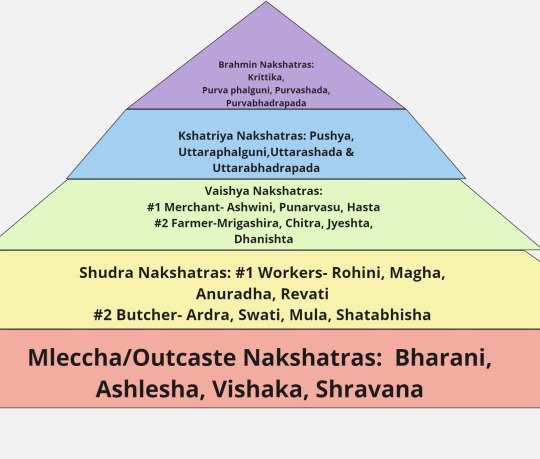
The more I study Mleccha nakshatra natives and the art they make, the more I understand how deeply lonely it is to have a Mleccha nak (Bharani, Ashlesha, Vishaka, Shravana) and I really feel for them. To live your whole life feeling misunderstood and othered is so difficult.
The movie Edward Scissorhands is a really good example of the "outcast" trope. The titular character is played by Johnny Depp who has Ashlesha Rising and his love interest is played by Winona Ryder who has Mercury (amatyakaraka) & Venus (atmakaraka) in Vishaka
I find Outcaste nak pairing very interesting because obviously you only feel like you belong/truly feel accepted in the presence of another Outcast.

Sidharth Malhotra, Vishaka Moon is married to Kiara Advani, who has Mercury & Venus (atmakaraka) in Ashlesha (if you have 2 or more planets in the same nak that energy is very concentrated even if its not your big 3)

they're both known for being pretty low-key people which is unusual in Bollywood lmao
Sid is an "outsider" which is what we call non-nepo actors in India. imagine the extent of nepotism in cinema in India that its the exception to be an "outsider"lmao. anyway Sid is pretty reserved and introverted and is known for not fitting in with the Bollywood crowd. Kiara is also kinda like that I guess but idk too much about her personality. They both seem happy together tho
Kareena Kapoor, Shravana Moon is married to Saif Ali Khan, Ashlesha Sun & Shravana Moon

Kareena's parents are famous actors who are separated (her dad was misogynistic and abusive and didn't want women to act) and even tho she's a nepo baby she didn't grow up with the same privileges as others in her famous family. Her elder sister had to drop out of school to support the family by acting as they were raised by a single mom and had fallen on bad times. You can see how the "outcast" themes were present in Kareena's life even though she's a very privileged nepo baby
Saif is also a nepo baby (welcome to bollywood lol) but he married a much older actress when he was 21 and had two kids. they later got divorced and Saif received a ton of bad press for alleged adultery, not getting custody or visitation rights of the kids, not paying child support (the amount was absurdly high tbh) etc he didn't fit in with the other actors of his generation. The media & public went crazy when news of Saif & Kareena getting married came out bc Saif is a divorcee with 2 kids (this stuff is still taboo in India unfortunately) and Kareena is one of the most successful stars of her generation. But they've been married for 10+ yrs and have 2 kids and are as happy as ever.

Even Kareena's longterm ex-boyfriend, Shahid Kapoor was a Mleccha caste nak guy (he has Vishaka Moon)
Expanding on the outcast tropes, Shahid's parents separated when he was young and he saw little of his biological father. He had to work very hard for very long to break into the industry and even now, he's not really given his due as an actor.
Alia Bhatt, Shravana Rising is married to Ranbir Kapoor, Shravana Moon
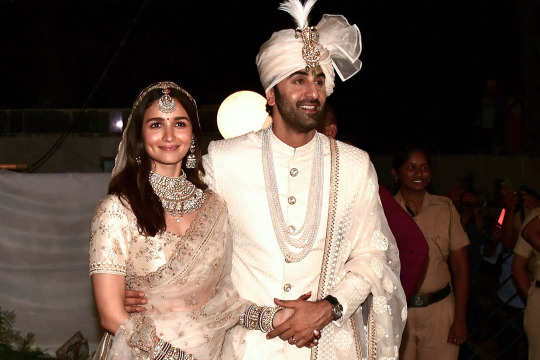
their marriage seems hella toxic to me ngl BUT they've both had similar childhoods.
Alia & Ranbir are both nepo babies (welcome to bollywood), Alia is like a tier 3 nepo (her father is a notoriously controversial filmmaker) whilst Ranbir is like a tier 1 nepo (he is a 4th generation actor from the biggest film family in India) however both their parents had unhappy marriages, and both of them had abusive fathers. trauma bonding, mayhaps? they're both also extremely close to their mothers as well (Moon dominant people often tend to be)
Its another example of Outcaste naks bonding over their shared experiences/feelings of being the outcast.

all members of Blackpink have an Outcaste nakshatra in their chart that is prominent in some way.
Jisoo- Shravana Moon, Venus in Vishaka (darakaraka), Ketu in Bharani
Rose- Venus conjunct Jupiter (debilitated) in Shravana
Jennie- Vishaka Moon, Mars in Shravana
Lisa- Jupiter in Shravana (debilitated), Swati Moon (Swati is a Shudra nak, which is the lowest caste so the themes are similar to that of outcaste naks)
This is interesting to me because BP is the biggest girl group of all time yet they are also probably disproportionately hated for things they cant even control. they were mismanaged by a shitty ass company with very few comebacks and barely got to display their true calibre as artists and their media interactions, promos, other activities etc were severely controlled and restricted. all of this is to say that despite being the most successful group their actual experiences are far from sunshine and roses. they were treated like outcasts by their company and the industry and fans. they trained for 4-6 years, enduring a brutal and toxic system, worked very hard with what they were given, with 0 creative liberty to come this far im glad theyre pursuing solo careers now and hope to see them thrive<333

the movie Lost in Translation is a good example of two outcasts/lonely people who find comfort in each other
Bill Murray is Shravana Moon and Scarlett Johansson is Vishaka Moon

Sridevi, Ashlesha Sun & Rising and Boney Kapoor, Vishaka Sun & Mercury
So they had a really fcked up marriage that I won't get into but they were both people who felt like outcasts in their lives. Sridevi grew up with a stepfather and was pushed into acting by her mother when she was 3-4 years old (she's like an Indian Judy Garland tbh) who deprived her of formal education and a normal life so that she'd be the family cash cow. Being South Indian, she also found it hard to fit in among Bollywood folks as she initially spoke neither Hindi nor English. Boney's the ugly duckling of his family and his younger brother is one of the most famous/iconic actors ever, he had to become a movie producer since his brothers became actors and his father (who was a movie producer) thought it would be better if he stayed behind the scenes. themes of exclusion and outcast-ness crop up in their lives and in the lives of all the people I mention here.

Lady Bird is a good example of a movie about a female teenage outcast. The titular character is played by Saoirse Ronan, who has Bharani Moon
Recently I came across the content creator, Alana Lintao who often makes shorts about social behaviour. This one in particular stood out to me because its literally about one person being excluded by a group of friends or being treated like "the other".
Alana plays the excluded friend in this short as well. She has Bharani Sun, Swati Moon and Mercury in Revati amatyakaraka (Swati & Revati are both Shudra naks)
Outcaste naks are vilified and crucified for mistakes others get away with.

Janet Jackson, Vishaka Rising & Ketu
Janet's career took a hit and her life took a tumultuous turn after the Superbowl incident. She did not deserve all the vitriol she received then especially considering how so many others get away with wayyy worse

Jennie, Vishaka Moon gets hated on for absolutely nothing

Lana Del Rey, Ashlesha Moon, Vishaka Rising (&stellium)
Lana does say dumb things from time to time but she gets soooo much unnecessary hate
I have noticed how Outcaste nakshatras often tend to have really difficult childhood experiences

Jeanette McCurdy- Ardra sun, Bharani Moon & Pushya Rising
Jeanette opens up about her abusive mother and terrible childhood in her memoir. I mention her other placements as well because I've noticed that both Ardra & Pushya natives also experience abuse in their early lives

Britney Spears, Shravana Moon
she has endured so much abuse from so many people including her family. i wish her peace.

Wheein, Vishaka Moon grew up with a single mother and later after she made her debut her estranged father tried to borrow money from people under her name?? there was a minor scandal about it many years ago. She also grew up quite lower middle class if not poor.

David Bowie, Shravana Rising
Bowie once said, "“It wasn’t a particularly happy childhood, my parents were cold emotionally. There weren’t many hugs. I always craved affection because of that.”

Cole & Dylan Sprouse, Ashlesha Sun
Speaking on the Call Her Daddy podcast, he explained that their mother's issues with mental health and addiction contributed to her being "financially the most irresponsible woman ever." He said that when their dad was given forced custody when the boys were 10, their mom had already spent everything they'd earned from their early acting jobs. Though their dad wanted them to be "normal kids," he ultimately decided that the boys' acting careers were a financial necessity.

Ariel Winter, Shravana Sun
Ariel Winter has spoken out about how acting wasn't her choice, but it was her mother's. Ariel shared that her mother, Crystal Workman, had dreams of being an actor herself. Ariel said that with Crystal as her stage mom, she dealt with a lot of abuse and exploitation.
Once Ariel's acting career began, she said her mom put her on a strict diet and neglected her education. Her mother also had her dress in outfits that sexualized her. Ariel claimed her mom put her in “the smallest miniskirts, sailor suits, low-cut things, the shortest dresses you’ve ever seen. People thought I was 24 when I was 12. If there was going to be a nude scene when I was that age, my mother would have a thousand percent said yes.”
Now Bollywood is an industry run by film dynasties, its very rare for someone from the outside to break in and make it big. Being an "Outsider" is very difficult, people bully you, try to sabotage your career, try to isolate you etc etc, needless to say its not for the faint of heart. So lets take a look at some of the most successful "Outsiders" in Bollywood who made it big without any family in the business

ofc we have to start with the most successful outsider of all time, Shahrukh Khan, Shravana Moon
he truly came from nothing (father died when he was a teenager, mother died before he made his debut, has a sister with special needs who he has taken care of his entire life) and became the biggest star in the world.
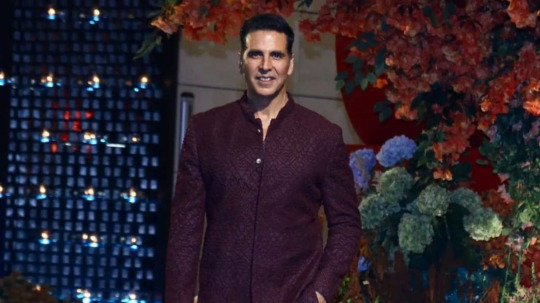
Akshay Kumar, Vishaka Moon, he was a martial artist, chef, waiter and worked numerous odd jobs before he started modelling in his late 20s and later started acting and today he has a net worth of $340 million

Anushka Sharma, Bharani Sun
her life is truly a case of being lucky af, she was a model and by the age of 19-20 she was cast in a film opposite Shahrukh Khan aka the biggest actor in the country produced by YRF, one of the biggest film production companies in India. its truly a fairy tale because neither can Anushka act nor is she gifted in any other way (bad dancer, heck she was even an awful model) but she's incredibly successful in every way and is now married to the (former) Captain of the Indian cricket team

Deepika Padukone, Shravana Rising
she is from a privileged background (her dad's a renowned badminton player) but she worked very very hard to get where she is today and has had more career longevity than just about any other actress.

Bipasha Basu & John Abraham, Bharani Moon
they were both a hot couple who were really popular in the 2000s
there are many other successful Outsiders but they don't have outcaste naks lol, these are the only ones i can think of rn :/
i hope this post was informative<33
#astrology notes#astrology observations#sidereal astrology#vedic astro notes#nakshatras#astro notes#vedic astrology#astrology#astroblr#astro observations#jyotish#shravana#bharani#vishaka#ashlesha
187 notes
·
View notes
Text


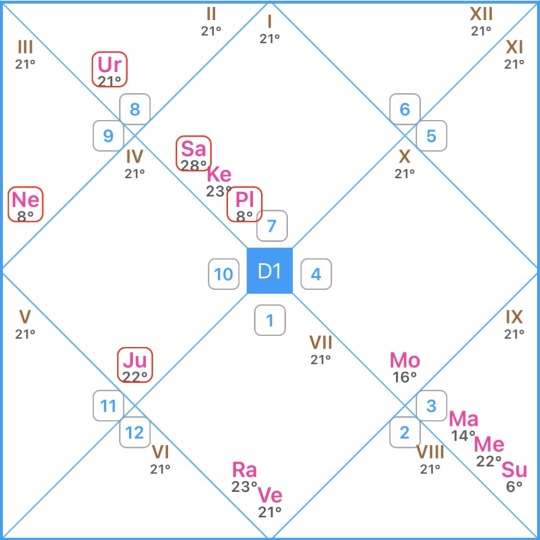
Lana Del Rey is an example of a bad girl archetype with her Moon in Ashlesha, debilitated Jupiter, Vishaka ascendant, Saturn-Ketu in Vishaka in the 1H, Pluto in the 1H, and Rahu-Venus conjunction aspecting the 1H
She also has Vishaka-like eyes and has seductive Ashlesha quality to them like her ascendant and Moon indicates, but her D60 True Node Ketu in Hasta of Virgo also gives her an innocent appearance
#astrology#vedic astrology#sidereal astrology#astrology observations#astro observations#ashlesha#vishaka#vishaka ascendant#ascendant in vishaka#moon in ashlesha#debilitated jupiter#jupiter in capricorn#pluto in the 1st house#venus conjunct rahu#astro community#astroblr#vedic astro notes#ketu#d60 ketu#ketu in hasta#ketu in virgo
70 notes
·
View notes
Text


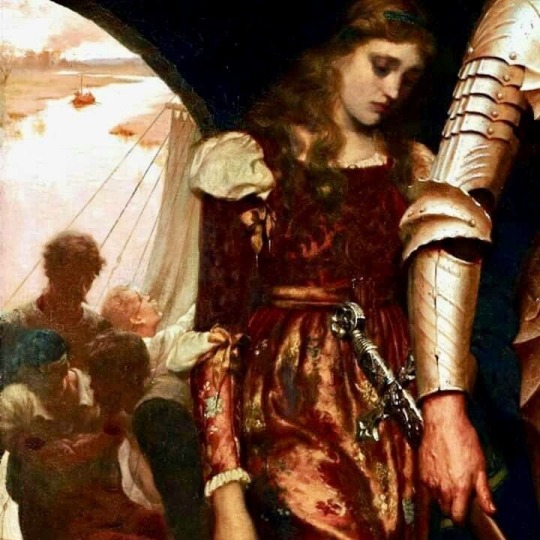

nakshatras as art: vishaka
1. "The Execution of Lady Jane Grey" Paul Delaroche
2. "Eve in the Garden of Eden" Anna Lea Meritt
3. "Conquest" Edmund Leighton
4. "In Time of Peril" Edmund Leighton
#astrology#astro#vedic#astro tumblr#nakshatras#moodboards#vishakha#vishaka#libra#scorpio#aes#rikastrology#nakshatrart
77 notes
·
View notes
Text

Empowering Workplace Safety: Understanding the Vishakha Guidelines. Sexual harassment in the workplace is an alarming issue that undermines the safety, dignity, and equality of individuals.
0 notes